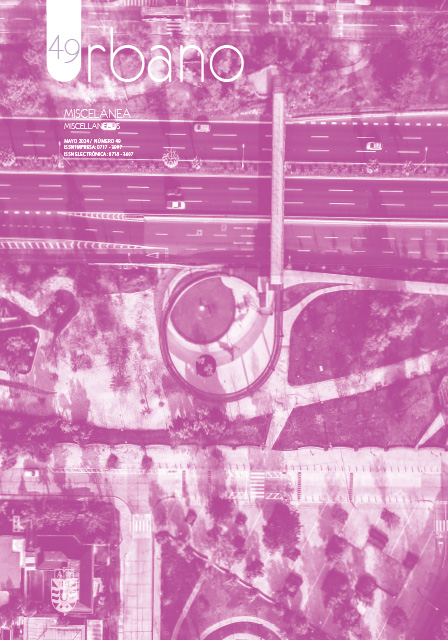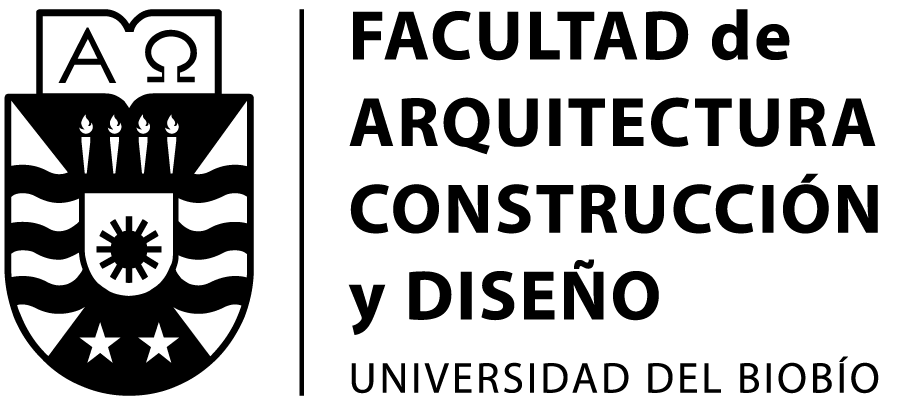Residential segregation in two cities in Peru’s southern macro-region
DOI:
https://doi.org/10.22320/07183607.2024.27.49.05Keywords:
residential segregation, segregation patterns, urbanization, urban growthAbstract
Studies on residential segregation in Peru have privileged the study of the capital city, to the detriment of cities with other scales and contexts. This article analyzes the residential segregation levels and patterns in two Peruvian cities in the southern macro-region: Arequipa and Tacna. Based on data provided by the 2007 and 2017 censuses, synthetic and spatial segregation indicators were analyzed in both cities, taking as reference the educational level of the head of household and calculating the data on the block, census area, and district scales. The results show that inherited segregation patterns are maintained, while at the same time, the growing middle-class sectors are included in the more consolidated working-class settlements. In addition, processes that reinforce segregation were identified, such as the modification of the role of central areas, urban land production for the upper-class areas, and homogeneity of disadvantages in new areas of urban expansion, which are linked, particularly in the city of Arequipa, to the occupation of risk areas. The study suggests that these processes shape a low-scale urban segregation or fragmentation pattern in both cities, which coexists with inherited patterns.
Downloads
References
ABANTO, E. (2017). Cuando el Estado construye la barriada. [Tesis para optar al grado de Magíster en Desarrollo Urbano]. Universidad Católica de Chile.
ÁGUILA, M. J., y PRADA, J. (2020). Crecimiento urbano y segregación socioespacial en Valdivia. Urbano, 23(42), 32-43. https://dx.doi.org/10.22320/07183607.2020.
42.03
APPARICIO, P., FOURNIER, E., y APPARICIO, D. (2013). Geo-Segregation Analyzer: a multiplaform application (version 1.1). Montreal, Spatial Analysis and Regional Economics Laboratory (SAREL), INRS Urbanisation Culture Société.
ARBACI, S. (2019). Paradoxes of Segregation: Housing Systems, Welfare Regimes and Ethnic Residential Change in Southern European Cities. NY: Wiley.
ARRIAGADA, C., y MORALES, N. (2006). Ciudad y seguridad ciudadana en Chile: Revisión del rol de la segregación sobre la exposición al delito en grandes urbes. EURE, 32(97), 37-48. https://dx.doi.org/10.4067/S0250-71612006000300003
BORSDORF, A., y HIDALGO, R. (2010). From Polarization to Fragmentation. Recent Changes in Latin American Urbanization en P. Lindert y O. Verkoren (Eds.) Decentralized Development in Latin America (pp. 23-34). Heidelberg: Springer.
CALDERÓN, J., y VEGA CENTENO, P. (2016). La cuestión urbana en Perú: balances y perspectivas para el siglo XXI en P. Metzger, et al. (Eds). La cuestión urbana en la región andina (pp.175-222). Quito: PUCE.
CANZIANI, J. y SCHEJTMAN, A. (2013) (Eds.). Ciudades intermedias y desarrollo territorial. Lima: PUCP.
CEBRIÁN, F., BELTRÃO SPOSITO, M. y DAMMERT-GUARDIA, M. (2022). Urban Growth, Metropolization, and Growth Management in Latin America and the Caribbean en J. Gonzales, C. Irazábal y R. Lois.González. (Eds.). The Routledge Handbook of Urban Studies in Latin America and the Caribbean (pp. 35-53). NY: Routledge.
CLICHEVSKY, N. (2000). Informalidad y segregación urbana en América Latina: Una aproximación. Santiago: CEPAL. https://fcp.uncuyo.edu.ar/upload/clichevsky-2000.PDF
DE QUEIROZ RIBEIRO, L. (Ed.). (2017). Urban Transformations in Rio de Janeiro: Development, Segregation, and Governance. Springer.
ELORZA, A. (2019). Segregación residencial y estigmatización territorial. Representaciones y prácticas de los habitantes de territorios segregados. EURE, 45(135), 91-110. http://dx.doi.org/10.4067/S0250-71612019000200091
ESPINOZA, A., FORT, R. y ESPINOZA, M. (2022). Reorganizar el Perú: ciudades intermedias y desarrollo en M. Balarin, S. Cueto y R. Fort. (Eds). El Perú pendiente: ensayos para un desarrollo con bienestar (pp. 287-310). Lima: GRADE.
FERNÁNDEZ DE CÓRDOVA, G., MOSCHELLA, P. y FERNÁNDEZ-MALDONADO, A. (2021) Changes in Spatial Inequality and Residential Segregation in Metropolitan Lima en M. van Ham, T. Tammaru, R. Ubarevičienė, H. Janssen. (Eds.). Urban Socio-Economic Segregation and Income Inequality: A Global Perspective (pp. 471 – 490). Springer. https://link.springer.com/chapter/10.1007/978-3-030-64569-4_24
GALARZA, L. (2011). Visión de futuro territorial. Documentos de trabajo # 14. CEPLAN. https://www.ceplan.gob.pe/documentos_/documento-de-trabajo-14-vision-de-futuro-del-desarrollo-territorial/
GARRETON, M., BASAURI, A., y VALENZUELA, L. (2020). Exploring the correlation between city size and residential segregation: Comparing Chilean cities with spatially unbiased indexes. Environment and Urbanization, 32(2), 569-588. https://doi.org/10.1177/0956247820918983
GOMES, M. y DE QUEIROZ, L. (2021). Segregación socioespacial y desigualdades de ingreso de la clase popular en la región metropolitana de Río de Janeiro, Brasil. EURE, 47(142), 17-48. https://doi.org/10.7764/EURE.47.142.02
INEI (2017). Perú: Perfil Sociodemográfico. https://www.inei.gob.pe/media/MenuRecursivo/publicaciones_digitales/Est/Lib1539/
JANOSCHKA, M. (2002). El nuevo modelo de la ciudad latinoamericana: fragmentación y privatización. EURE, 28(85), 11-20. https://dx.doi.org/10.4067/S0250-71612002008500002
KAZTMAN, R. (2001). Seducidos y abandonados: el aislamiento social de los pobres urbanos. Revista de la CEPAL, 75, 171-189. https://dialnet.unirioja.es/servlet/articulo?codigo=1237690
KRUPKA, D. (2007). Are big cities more segregated? Neighborhood scale and the measurement of segregation. Urban Studies, 44(1), 187-197. https://doi.org/10.1080/00420980601023828
MALOUTAS, T. (2012). Introduction: Residential Segregation in Context en T. Maloutas y K. Fujita. (Eds.) Residential segregation in comparative perspective: Making sense of contextual diversity. Ashgate.
MARENGO, C. y ELORZA, A. (2014) Tendencias de segregación residencial socioeconómica: El caso de Córdoba (Argentina) en el período 2001-2008. EURE, 40(120), 111-133. https://www.redalyc.org/pdf/196/19630362001.pdf
MARQUES, E. (2015). Urban Poverty, Segregation and Social Networks in São Paulo and Salvador. International Journal of Urban and Regional Research, 39(6), 1067-1083. https://doi.org/10.1111/1468-2427.12300
MASSEY, D. y DENTON, N. (1998). The Dimensions of Residential Segregation. Social Forces, 67(2), 281-315. http://www.jstor.org/stable/2579183
MAYORGA, J. M. (2021). Comparación de los patrones espaciales e incidencia de la segregación residencial en las principales ciudades de Colombia. Investigaciones Geográficas (España), (75), 267-294. https://doi.org/10.14198/INGEO.17548
MEZA, M. y CONDORI, V. (2018). Historia mínima de Arequipa: desde los primeros pobladores hasta el presente. Instituto de Estudios Peruanos.
Ministerio de Vivienda, Construcción y Saneamiento. (2016). Decreto Supremo que aprueba el Reglamento de Acondicionamiento Territorial y Desarrollo Urbano Sustentable. https://busquedas.elperuano.pe/dispositivo/NL/1466636-3 21/05/24
Municipalidad Provincial de Arequipa. (2015). Memoria del PDM Arequipa. Plan de Desarrollo Metropolitano de Arequipa 2016-2025. Región y Provincia de Arequipa. https://impla.gob.pe/publicaciones/pdm-2016-2025/
Municipalidad Provincial de Tacna. (2013). Plan de Desarrollo Urbano de la ciudad de Tacna 2014-2023.
MONKKONEN, P. (2012). La segregación residencial en el México urbano: Niveles y patrones. EURE, 38(114), 125-146. http://dx.doi.org/10.4067/S0250-71612012000200005
NIEMBRO, A., GUEVARA, T., y CAVANAGH, E. (2019). Segregación residencial socioeconómica e inserción laboral: El caso de San Carlos de Bariloche, Argentina. INVI, 34(97), 129-154. http://dx.doi.org/10.4067/S0718-83582019000300129
OTERO, G., VOLKER, B., y ROZER, J. (2021). Space and social capital: Social contacts in a segregated city. Urban Geography, 43(127), 1-24. https://doi.org/10.1080/02723638.2021.1950982
PRADA-TRIGO, J., y ANDRADE, P. (2022). Segregación y vulnerabilidad como efecto de las políticas públicas en Chile. El caso de Alerce, Puerto Montt. Cuadernos Geográficos, 61(2), 247-268. https://doi.org/10.30827/cuadgeo.v61i2.21989
PRÉVOT SCHAPIRA, M. (2001). Fragmentación espacial y social: conceptos y realidades. Perfiles latinoamericanos, 9(19), 33-56. https://perfilesla.flacso.edu.mx/index.php/perfilesla/article/view/315/269
RODRÍGUEZ, J., y ARRIAGADA, C. (2004). Segregación Residencial en la Ciudad Latinoamericana. EURE, 30(89), 5-24. http://dx.doi.org/10.4067/S0250-71612004008900001
RUIZ, C., VIEYRA, A., y MÉNDEZ-LEMUS, Y. (2021). Segregación espacial en Tarímbaro, municipio periurbano de la zona metropolitana de Morelia, Michoacán. Revista de geografía Norte Grande, 78, 237-257. http://dx.doi.org/10.4067/S0718-34022021000100237
RUIZ-TAGLE, J. y LÓPEZ, E. (2014). El estudio de la segregación residencial en Santiago de Chile: Revisión crítica de algunos problemas metodológicos y conceptuales. EURE, 40(119), 25-48. http://dx.doi.org/10.4067/S0250-71612014000100002
SABATINI, F., CÁCERES, G., y CERDA, J. (2001). Segregación residencial en las principales ciudades chilenas: Tendencias de las tres últimas décadas y posibles cursos de acción. EURE, 27(82), 21-42. http://dx.doi.org/10.4067/S0250-71612001008200002
SABATINI, F. R., RASSE, A., TREBILCOCK, M., y GREENE, R. (2020). Ciudad y segregación vapuleadas por el capitalismo. Crítica de los enfoques idealistas. Urbano, 23(42), 08-17. https://doi.org/10.22320/07183607.2020.23.42.01
SÁNCHEZ, M. y GÓMEZ, R. (2021). Indicadores espaciales y no espaciales: un enfoque complementario para el análisis cuantitativo de la segregación residencial en la ciudad de Managua. Urbano, 24(43),52-61. https://dx.doi.org/10.22320/07183607.2021.24.43.05
THEODORE, N., PECK, J., y BRENNER, N. (2009). Urbanismo neoliberal: la ciudad y el imperio de los mercados. Temas sociales, 66(10), 1-11. https://www.researchgate.net/publication/277955552_Urbanismo_neoliberal_la_ciudad_y_el_imperio_de_los_mercados
TORO, F., y OROZCO, H. (2018). Concentración y homogeneidad socioeconómica: Representación de la segregación urbana en seis ciudades intermedias de Chile. Revista de Urbanismo, 38, 1. https://doi.org/10.5354/0717-5051.2018.48834
VERGARA, L., y SALAZAR, G. (2021). Non-metropolitan cities in Latin American urban studies: Between ‘trickle-down urban theory’ and ‘singularisation theory’. International Development Planning Review, 43(3), 321-344. https://doi.org/10.3828/idpr.2020.18
VILELA, M. (2023). Relaciones espaciales en la dispersión poblacional y estructura territorial. Valle Sondondo. Territorios, 48(5). https://doi.org/10.12804/revistas.urosario.edu.co/territorios/a.12230
ZAPANA, L., MARCH, H., y SAURI, D. (2021). Las desigualdades en el acceso al agua en ciudades latinoamericanas de rápido crecimiento: El caso de Arequipa, Perú. Revista de geografía Norte Grande, 80, 369-389. https://revistaingenieriaconstruccion.uc.cl/index.php/RGNG/article/view/18193/36391
Downloads
Published
How to Cite
Issue
Section
License
Copyright (c) 2024 Manuel Dammert-Guardia, Luis Enrique Rivera-Segura

This work is licensed under a Creative Commons Attribution-ShareAlike 4.0 International License.
The content of articles which are published in each edition of Habitat Sustentable, is the exclusive responsibility of the author(s) and does not necessarily represent the thinking or compromise the opinion of University of the Bio-Bio.
The author(s) conserve their copyright and guarantee to the journal, the right of first publication of their work. This will simultaneously be subject to the Creative Commons Recognition License CC BY-SA, which allows others to share-copy, transform or create new materials from this work for non-commercial purposes, as long as they recognize authorship and the first publication in this journal, and its new creations are under a license with the same terms.![]()























